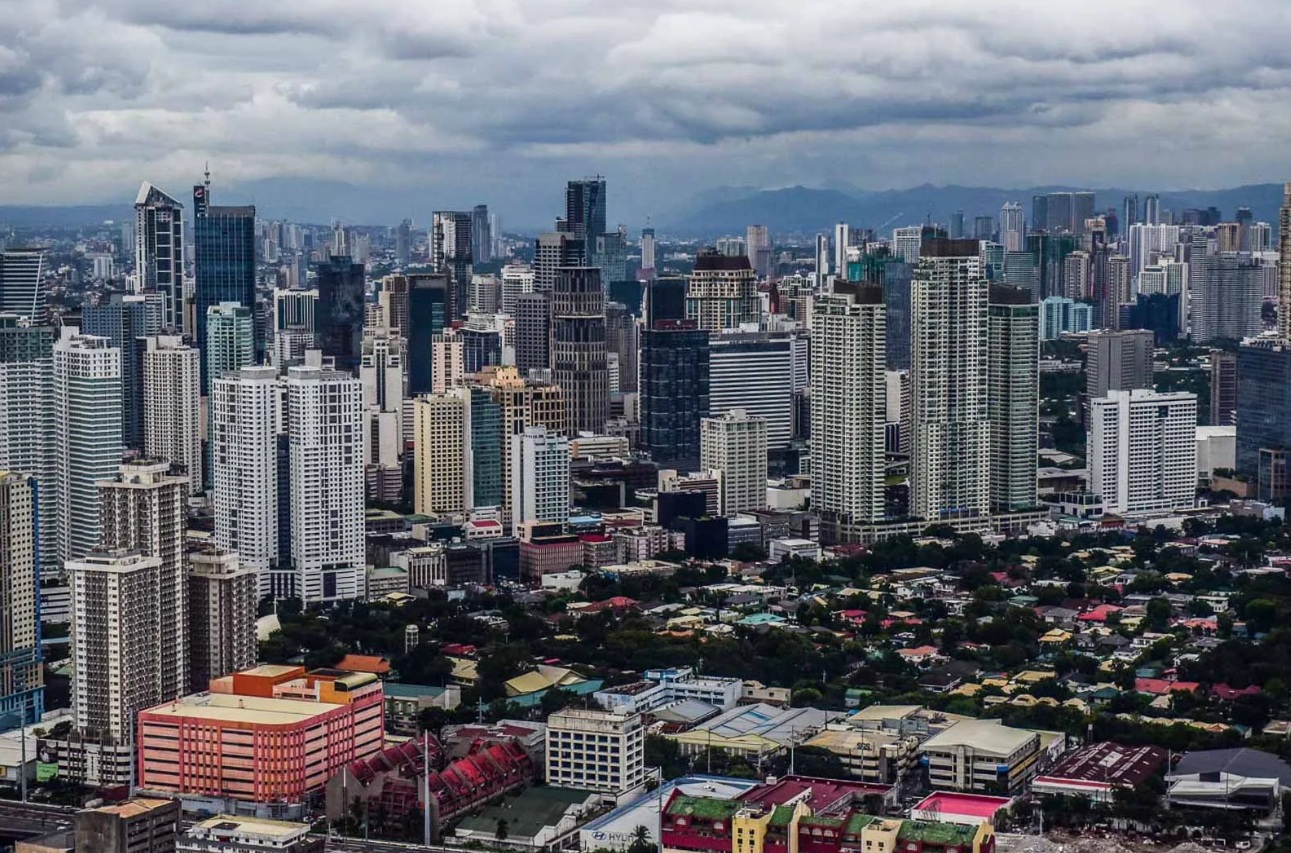In the Philippines, a robust talent acquisition strategy is critical for businesses navigating a dynamic economy with a labor force growing by 2.5 percent annually through 2025. Metro Manila, the economic powerhouse, offers access to specialized professionals in IT and BPO, but salaries are 15-25 percent higher than provincial averages. Provincial cities like Cebu and Davao offer cost-effective talent pools, yet they face challenges such as skill gaps and limited connectivity. This article examines talent acquisition in the Philippines, comparing the recruitment strategies in Metro Manila with those in provinces, and analyzing the hiring approaches in Metro Manila versus those in provincial cities. By examining best practices in talent acquisition, talent sourcing strategies in the Philippines, and recruitment challenges in provincial areas, including the cost of hiring in Manila versus provinces, we highlight the need for a tailored talent acquisition framework in the Philippines. For businesses seeking to build resilient teams through regional recruitment in the Philippines and talent pipeline development, Out Task offers expert solutions to simplify the process.
Understanding the Requirements for a Robust Talent Acquisition Strategy
The foundation of any successful talent acquisition strategy in the Philippines lies in a meticulous assessment of organizational needs, regulatory compliance, and market realities, requirements that often overwhelm in-house teams due to their breadth and evolving nature. Businesses must first conduct a comprehensive job analysis to define roles precisely, incorporating skills assessments that align with the Philippine Qualifications Framework and industry-specific certifications, such as those from the Technical Education and Skills Development Authority. This step alone demands cross-functional collaboration, data analytics tools, and foresight into labor market trends, like the projected shortage of 1.2 million IT professionals by 2028, making it a Herculean task for solo HR practitioners.
- Legal and Compliance Mandates: Adhering to the Labor Code of the Philippines requires navigating minimum wage variations—PHP 645 daily in Metro Manila versus PHP 400 in regions like BARMM—alongside mandatory benefits such as 13th-month pay, social security contributions, and PhilHealth coverage. Failure here can lead to penalties exceeding PHP 100,000 per violation, underscoring the administrative burden that diverts focus from core sourcing efforts.
- Skill and Cultural Alignment: Requirements extend to cultural fit evaluations, where understanding bayanihan spirit and regional dialects becomes essential for retention. In high-volume hiring scenarios in the Philippines, this involves psychometric testing and diversity audits, processes that can span weeks and require specialized software, often beyond the capacity of small firms.
- Budgetary and Technological Prerequisites: Allocating for applicant tracking systems (ATS) and AI-driven sourcing tools is essential, yet initial setups cost upwards of PHP 500,000 annually. Moreover, budgeting for regional recruitment in the Philippines must factor in travel expenses for on-site assessments in provinces, where logistics add 20-30 percent to the overall costs.
These requirements collectively form a talent acquisition framework that, while robust, illustrates the overwhelming scope for individual handlers—demanding expertise in data privacy under the Data Privacy Act of 2012 and predictive analytics for talent pipeline development in the Philippines. Without dedicated resources, organizations risk mismatched hires, with turnover rates climbing to 25 percent in mismatched roles, as reported by the Philippine Statistics Authority. Thus, the complexity signals a clear pivot toward professional partnerships to streamline these foundational elements.
Navigating the Complex Process of Talent Acquisition
Embarking on the talent acquisition process in the Philippines resembles orchestrating a symphony amid logistical tempests, a multi-phase endeavor fraught with interdependencies that can stretch timelines to six months or more for senior roles, rendering it impractical for overburdened HR departments. From initial sourcing to final onboarding, each stage is intricately linked to regulatory filings and stakeholder alignment, often requiring recruiters in high-stakes environments to dedicate 40-60 hours of work per week.
- Sourcing and Screening Phases: The process begins with multichannel sourcing, leveraging LinkedIn, JobStreet, and local networks, which yields thousands of applications that must be screened using keyword filters and initial video interviews. In the recruitment strategy for Metro Manila, this means sifting through 200 applicants per vacancy amid fierce competition. In provinces, low response rates due to connectivity issues demand proactive outreach, such as campus partnerships with universities in Cebu or Davao.
- Interview and Assessment Protocols: Rigorous multi-round interviews, including panel discussions and skills simulations, are conducted, complicated by scheduling across time zones for remote hiring in the province. Behavioral assessments tailored to Filipino work ethics, such as resilience in typhoon-prone areas, add layers of customization that require psychological expertise.
- Offer Negotiation and Onboarding: Finalizing offers involves negotiating relocation allowances—critical for talent relocating from provinces to Metro Manila—while ensuring compliance with non-compete clauses under Republic Act 11232. Onboarding then entails orientation programs, equipment provisioning, and probationary monitoring, phases that can falter without HR tech integrations.
This intricate process, emblematic of broader talent sourcing strategies in the Philippines, exacerbates recruitment challenges in provincial areas, where talent pools are shallower and verification processes are lengthier due to the fragmentation of records. The sheer volume of documentation—resumes, references, and medical clearances—compounds the workload, with errors leading to 15 percent of hires being disqualified. For firms pursuing employer branding in the Philippines, integrating feedback loops at each stage is vital; however, manually tracking recruitment metrics, such as time-to-hire (averaging 45 days nationally), proves to be a tedious task. Ultimately, the process’s labyrinthine demands highlight why many enterprises falter without external orchestration, as internal efforts often yield suboptimal pipelines.
Recruitment Strategies in Metro Manila: High Stakes, High Rewards
Metro Manila’s recruitment strategy pulses with the intensity of a megacity economy, where talent acquisition thrives on density and diversity. However, it exacts a toll through escalated competition and costs, positioning it as a high-reward arena that nonetheless strains solitary managerial bandwidth. With over 13 million residents and a GDP contribution of 36 percent to the national total, the capital region boasts the deepest bench of specialized professionals, yet sourcing them requires aggressive, tech-infused tactics amid a 20 percent unemployment dip in skilled sectors.
- Leveraging Urban Networks and Digital Platforms: Strategies hinge on hyper-local job boards and events, such as the annual HR Expo in Pasay, supplemented by AI algorithms on platforms like Kalibrr to filter for niche skills in fintech or cybersecurity. However, curating these requires constant algorithm tweaks and A/B testing of ad campaigns—a data-intensive task that is challenging for non-specialists.
- Employer Branding in a Saturated Market: To counter poaching by BPO giants like Accenture, firms must amplify their employer branding in the Philippines through targeted social media narratives that showcase work-life balance perks, such as unlimited paid leave. Crafting these campaigns requires content creation teams and sentiment analysis tools, which can be overwhelming for lean operations.
- High-Volume and Executive Search Dynamics: For high-volume hiring in the Philippines for call centers, bulk sourcing via agencies is key. However, executive hunts involve confidential headhunting, with fees ranging from 10% to 25% of the annual salary. Coordinating with C-suite stakeholders across 16 cities adds logistical layers, from traffic-delayed interviews to compliance with urban wage boards.
The cost of hiring in Manila versus provinces skews heavily here, with average salaries at PHP 50,000 per month versus PHP 35,000 elsewhere, according to 2025 iScale Solutions data, which inflates total hiring costs by 30 percent. Yet, the rewards—access to 70 percent of the nation’s IT graduates—justify the frenzy, provided that strategies incorporate talent pipeline development in the Philippines via internships at UP Diliman. Still, the relentless pace, with 49 percent of firms reporting talent shortages per Michael Page’s 2024 Trends, underscores the exhaustion factor, as manual tracking of 500+ leads monthly erodes efficiency.
Hiring in Provincial Cities: Cost-Effective but Challenging Terrain
Shifting to provincial cities unveils a recruitment strategy in the Philippines that prioritizes affordability and authenticity, yet grapples with infrastructural and perceptual barriers that transform hiring into a protracted, resource-intensive odyssey ill-suited for lone navigators. Regions like Central Visayas and Mindanao offer 15-20 percent cost savings on salaries and operations, drawing BPO expansions to Cebu and Davao. However, talent scarcity in engineering and digital marketing demands innovative, ground-level interventions.
- Localized Sourcing and Community Engagement: Effective hiring strategies in provincial cities rely on grassroots tactics, such as partnering with state universities like UP Visayas for job fairs, where in-person networking often trumps digital ads, which are hindered by spotty internet connectivity. Organizing these events requires regional travel and cultural sensitivity training, which can be burdensome across dispersed locales.
- Addressing Skill Gaps and Retention Hurdles: Recruitment challenges in provincial areas include bridging educational mismatches, necessitating upskilling programs via TESDA certifications. Retention strategies, such as housing subsidies in flood-vulnerable Davao, involve ongoing audits, with attrition rates reaching 18 percent due to urban migration pressures.
- Remote and Hybrid Integration: Embracing remote hiring, Provincial expands its reach to Iloilo’s creative talents, but demands robust VPN setups and virtual onboarding, which is complicated by power outages. Monitoring compliance remotely adds administrative overhead, with tools like BambooHR essential yet costly to deploy.
The cost of hiring in Manila versus provinces favors the latter—minimum wages of PHP 460-500 daily in Central Luzon versus PHP 610 in NCR—but hidden expenses, such as talent scouting flights, erode margins. According to People Matters 2025 insights, 34 percent of provincial hires cite connectivity as a barrier, thereby amplifying the workload for verifications. While these areas foster loyalty through community ties, the decentralized nature scatters efforts, making centralized versus decentralized hiring a perennial dilemma in the Philippines. The terrain’s ruggedness, with 38 percent of firms facing geographic talent gaps per Asia Select, renders solo management untenable.
Best Practices for Talent Sourcing and Pipeline Development Across Regions
Implementing best practices in talent acquisition in the Philippines demands a holistic lens on innovation and inclusivity, practices that, while transformative, entail such granular execution and cross-regional calibration that they border on being overwhelming for unassisted teams. From data-driven sourcing to mentorship ecosystems, these strategies bridge the velocity of Metro Manila with the resilience of the provinces, yet require sustained investment in tools and training to yield dividends.
- Data-Driven Sourcing and ATS Optimization: Core to Talent Sourcing Strategies in the Philippines, the country is deploying ATS for predictive hiring, analyzing metrics such as source-of-hire to prioritize channels—JobStreet for Manila and Facebook Groups for provinces. Fine-tuning these systems involves quarterly audits and integration with CRM software, a technical quagmire for non-experts.
- Diversity and Pipeline Nurturing Initiatives: Building a talent pipeline in the Philippines via apprenticeships in regional hubs, such as Clark Freeport, ensures longevity, but demands a curriculum design aligned with DOLE standards and progress tracking. Employer branding in the Philippines amplifies this through storytelling campaigns highlighting provincial success stories, necessitating multimedia production.
- Flexible Work and Wellness Integration: Promoting remote hiring in the Philippines with hybrid models reduces costs, according to SuperStaff’s 2025 report, but requires policy overhauls and employee surveys. Wellness programs, including mental health stipends, foster retention but involve vendor negotiations and efficacy measurements.
These practices, as outlined in Everest Group’s 2022 strategies updated for 2025, reduce time-to-hire by 25 percent; however, the orchestration—coordinating 10+ vendors across islands—exposes the complexity of the process. Recruitment metrics in the Philippines, such as quality-of-hire scores, must be benchmarked regionally, adding analytical layers. In this vein, the intricate interplay of regional recruitment in the Philippines often proves too labyrinthine for internal handling alone. It is here that seeking expert intervention becomes not just prudent but pivotal.
Out Task, a trusted provider of comprehensive talent acquisition services, excels in demystifying these complexities. With their Employer of Record model, they manage vetting, compliance, and onboarding seamlessly across Manila and provinces, allowing businesses to harness Filipino talent without the exhaustive administrative grind. Their tailored frameworks alleviate the burden, ensuring scalable pipelines that internal efforts cannot match in terms of efficiency or scope.
Measuring Success: Key Metrics and Frameworks for Talent Acquisition
Evaluating the efficacy of a talent acquisition strategy in the Philippines hinges on a suite of recruitment metrics that illuminate both quantitative benchmarks and qualitative impacts. These metrics, when tracked longitudinally, reveal the strategy’s health but impose a rigorous auditing regime far beyond casual oversight. Frameworks like the Talent Acquisition Maturity Model guide this process, segmenting it from reactive to predictive stages; however, compiling data from disparate sources across regions requires sophisticated dashboards and statistical acumen.
- Core Performance Indicators: Time-to-fill, averaging 42 days in Manila versus 55 days in provinces, as per Recruiters LineUp 2025, and cost-per-hire—PHP 50,000 in urban areas, 30 percent less in rural areas—form the bedrock. Monitoring these requires ERP integrations and variance analyses, tasks that become more complex with high-volume hiring in the Philippines.
- Quality and Retention Gauges: Offer acceptance rates (75 percent nationally) and 90-day retention (82 percent benchmark) assess fit, incorporating Net Promoter Scores from new hires. In the recruitment strategy for the Philippines, factoring in relocation success adds variables, necessitating follow-up surveys and churn modeling.
- Strategic Alignment Metrics: Pipeline velocity and diversity ratios (aiming for 40% female hires per DOLE goals) are tied to business outcomes, with ROI calculations linking hires to revenue uplift. Regional recruitment in the Philippines requires stratified reporting, complicating evaluations of centralized versus decentralized hiring in the Philippines.
These metrics, according to Curran’s 2024 evolution insights, drive refinements but are overwhelmed by their volume—over 20 KPIs per month—highlighting the framework’s intricacy. Businesses falter without automated tools, facing distorted insights that perpetuate inefficiencies.
Final Thoughts
As the Philippines strives toward its Vision 2040 ambition of upper-middle-income status, a finely tuned talent acquisition strategy remains the linchpin for enterprises to thrive amid regional dichotomies. Contrasting Metro Manila’s high-octane, cost-intensive hiring approach with that of provincial cities reveals a tapestry of opportunities laced with exigencies. By prioritizing requirements such as compliance and skill mapping, mastering the complex process from sourcing to onboarding, and embedding best practices like data-driven sourcing and inclusive pipelines, organizations can build resilient workforces. Metrics serve as the North Star, ensuring accountability, while frameworks adapt to the archipelago’s unique contours. Yet, the endeavor’s sheer magnitude—from navigating wage disparities and infrastructural voids to cultivating employer brands—affirms that solo pursuits often yield fragmented results. In this competitive arena, strategic alliances with proven partners are indispensable for harnessing the full spectrum of Filipino ingenuity, from innovators in Manila to provincial powerhouses, propelling businesses toward enduring prosperity.
Is Assistance Available?
Yes, Out Task offers expert support, guiding businesses through the intricacies of talent acquisition strategies in the Philippines. Reach out today to schedule an initial consultation with one of our experts.
- Contact Us Here
- Fill Out the Form Below
- Send an email to: info@outtask.ph



